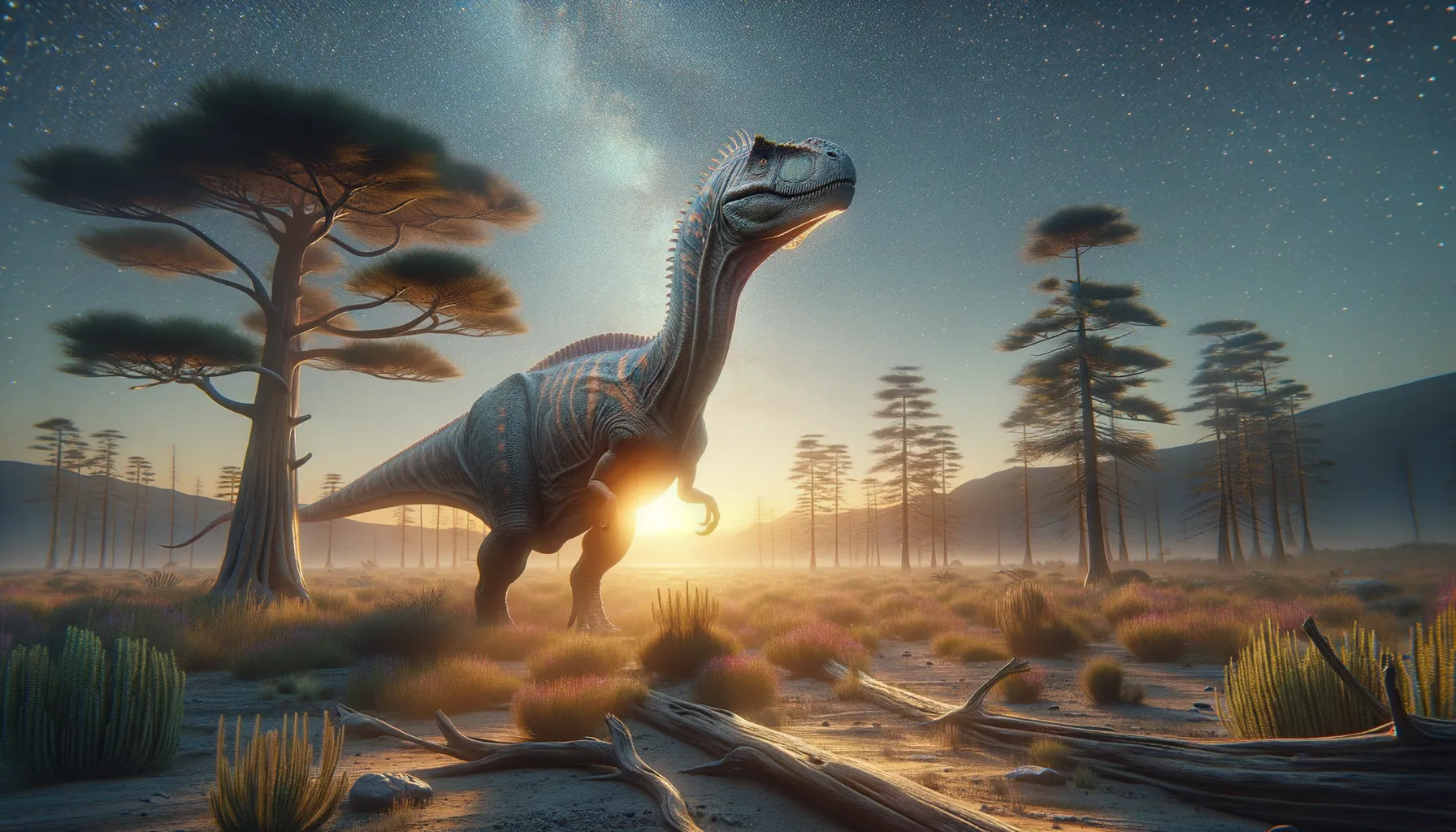
Caulodon
The ancient mystery of the Jurassic era.
Period
Jurassic
Length
Approximately 20 feet long.
Height
About 6 feet tall at the hips.
Weight
Around 1,500 to 2,000 pounds.
Caulodon, a dinosaur from the Jurassic period, is primarily known due to fossilized teeth discoveries. This reptilian creature roamed the earth millions of years ago, balancing its life between land and potential water sources. It was characterized by a moderate build, allowing it to fend for itself and adapt to various environmental changes. The study of Caulodon's fossils has provided valuable insights into the ecosystem and interspecies relationships of its time.
Diet
Caulodon was likely an herbivore, feeding on a variety of plants. It might have consumed vegetation like ferns, cycads, and other available flora.
Hunting
As a plant-eater, Caulodon did not hunt in the traditional sense but foraged for food. It used its teeth and possibly digestive processes to break down tough plant material.
Environmental challenges
During its existence, Caulodon faced various environmental challenges like climate fluctuations and habitat changes. These shifts in the environment required adaptability to survive. Competition for food resources also posed significant challenges, prompting interactions with other herbivores. Predatory threats would have driven evolutionary adaptations for defense.
Speed
Known for moderate speed, neither fast nor slow.
Lifespan
Estimated to live around 10 to 20 years.
First discovery
Caulodon was first identified based on teeth fossils in the late 19th century.
Fun Facts
- Caulodon was originally thought to be a type of dinosaur, but it was later reclassified as a type of prehistoric shark.
- The name 'Caulodon' translates to 'stem tooth,' referring to the unique shape of its teeth.
- Caulodon is known from fossils that mainly include its teeth, which have been found in Europe.
- This creature lived during the Late Jurassic period, around 150 million years ago.
- Unlike dinosaurs, Caulodon was an aquatic creature that roamed ancient seas.
- Due to its shark heritage, Caulodon was likely a skilled predator in its environment.
Growth and Development
Caulodon likely experienced a gradual growth rate, reaching full size over several years. Juvenile dinosaurs might have been more vulnerable to predators. Social structures might have played a role in development, offering protection to younger individuals. Growth rates and lifespan were possibly influenced by environmental factors and resource availability.
Habitat
Caulodon inhabited regions with lush vegetation and ample food sources. Its environment was characterized by diverse plant life, supporting its dietary needs. Proximity to water sources may have been crucial for survival, aiding in feeding and hydration. The habitat possibly included forests and open plains, offering varied ecosystems.
Interaction with other species
It coexisted with other dinosaur species, sharing resources and territories. Interactions might have included both competition and cooperative relationships for survival. Predators in the area posed threats, influencing behavioral strategies. Mutualistic relationships could have been possible, promoting ecosystem balance.
Natural lifespan
Caulodon had an estimated natural lifespan of 10 to 20 years.
Reproduction
Caulodon likely reproduced by laying eggs, a common trait among dinosaurs. Parental care might have been minimal, with young fending for themselves early on. Nesting behavior may have involved selecting safe locations for egg-laying. Reproductive strategies contributed to its survival in changing environments.
Social behaviour
Caulodon might have exhibited some social behaviors, forming groups for protection. These groups could have provided safety and enhanced foraging strategies. Social dynamics included potential hierarchies and cooperative interactions. The nature of these interactions contributed to survival and adaptation.
Fossil locations
Caulodon's fossils have primarily been found in regions with rich Jurassic deposits. Discoveries have been concentrated in North America, shedding light on its distribution. These fossil sites provide valuable insights into the ancient environments it inhabited. Their locations continue to guide ongoing research and exploration.
